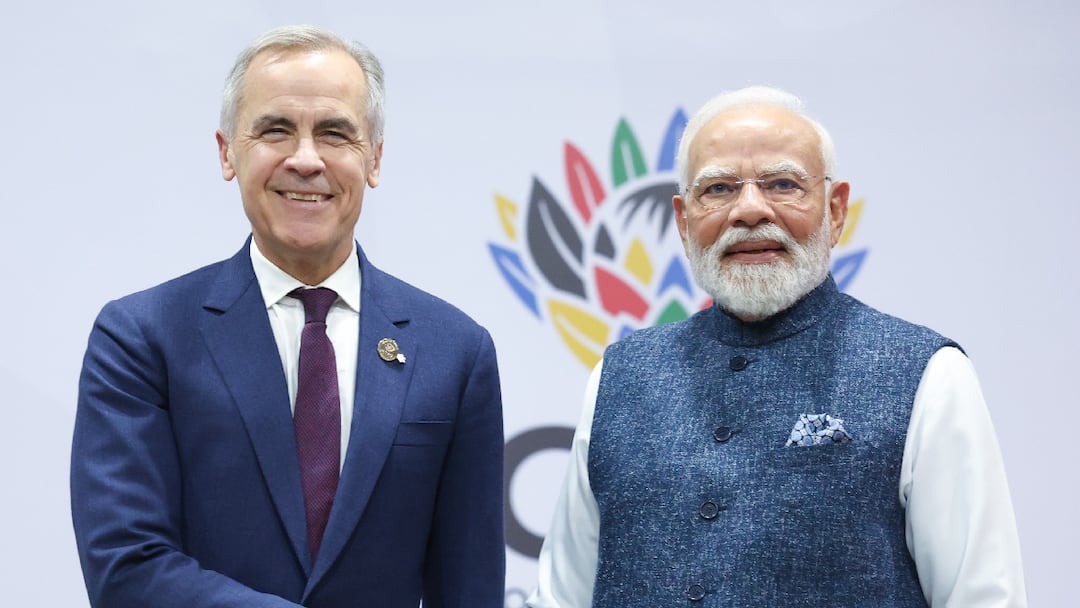In a major shift that could redefine their bilateral relationship, India and Canada have agreed to resume negotiations on a high-ambition Comprehensive Economic Partnership Agreement (CEPA). The announcement came after Prime Minister Narendra Modi met his Canadian counterpart, Mark Carney, on the sidelines of the G20 Leaders’ Summit in Johannesburg on Sunday.
Their decision marks a pivotal reset in ties that had remained tense for years, offering both nations a chance to rebuild trust and revive economic cooperation.
CEPA Talks Back on Track
Talks on the Canada–India CEPA first began in 2010 and picked up pace again in 2022, particularly in areas such as pharmaceuticals, critical and rare earth minerals, renewable energy, mining, tourism and urban infrastructure. However, negotiations stalled in 2023 after Canada put the discussions on hold.
According to India’s Ministry of External Affairs (MEA), both sides have now committed to pursuing an “ambitious” trade pact aimed at doubling bilateral trade to $50 billion by 2030. The renewed push will also include strengthening civil nuclear cooperation and progressing discussions on long-term uranium supply, an area of strategic importance for both countries.
Had a very productive meeting with Prime Minister Mark Carney of Canada. We appreciated the significant momentum in our bilateral ties since our earlier meeting held during the G7 Summit hosted by Canada. We agreed to further advance our relations in the coming months,… pic.twitter.com/lnuj2SGoWu
— Narendra Modi (@narendramodi) November 23, 2025
From Diplomatic Freeze to Constructive Dialogue
The progress represents a notable thaw following several difficult years. India has long raised concerns about Khalistani extremist networks operating from Canadian territory, arguing they pose a direct threat to its national security. Relations hit a low point in 2023 when former Canadian Prime Minister Justin Trudeau accused India of involvement in the death of a Canadian citizen associated with Khalistani separatism, an allegation New Delhi dismissed as baseless and politically motivated. The fallout led to a diplomatic downgrading and a suspension of trade talks.
The shift began earlier this year as External Affairs Minister S. Jaishankar and Canada’s Foreign Minister Anita Anand held multiple rounds of discussions, gradually restoring communication channels. By October 2025, both nations formally announced the normalisation of diplomatic ties, including the reinstatement of their High Commissioners in New Delhi and Ottawa.
Canada Signals Fresh Engagement
Speaking to the media on Sunday, Prime Minister Carney said Canada was “reengaging pragmatically with global giants India and China”. He highlighted the launch of a new trilateral partnership between Canada, India and Australia focused on technology and innovation, emphasising cooperation in clean energy, critical minerals and artificial intelligence.
He noted that the initiative would help unlock more opportunities for Canadian businesses and workers, signalling a broader strategic shift in Ottawa’s global engagement.
A Broad, Future-Focused Trade Agenda
The revived CEPA negotiations are expected to cover a wide span of sectors, including goods, services, investments, agriculture, sustainable development, digital trade and labour mobility. Both countries are also keen to advance cooperation in artificial intelligence and digital technologies, aligning their economic ambitions with emerging global trends.
At the Johannesburg meeting, PM Modi and Carney also welcomed the Australia-Canada-India Technology and Innovation (ACTI) Partnership. The platform aims to expand trilateral cooperation in critical technologies, AI, nuclear energy and supply-chain diversification—areas that are becoming increasingly central to global economic resilience.
A Reset with High Stakes
With CEPA negotiations set to resume and high-level engagement now fully restored, India and Canada appear ready to rebuild a partnership once considered at risk. The coming months will reveal whether this diplomatic reset can deliver long-term economic and strategic gains for both countries—or whether old challenges will resurface once again.


